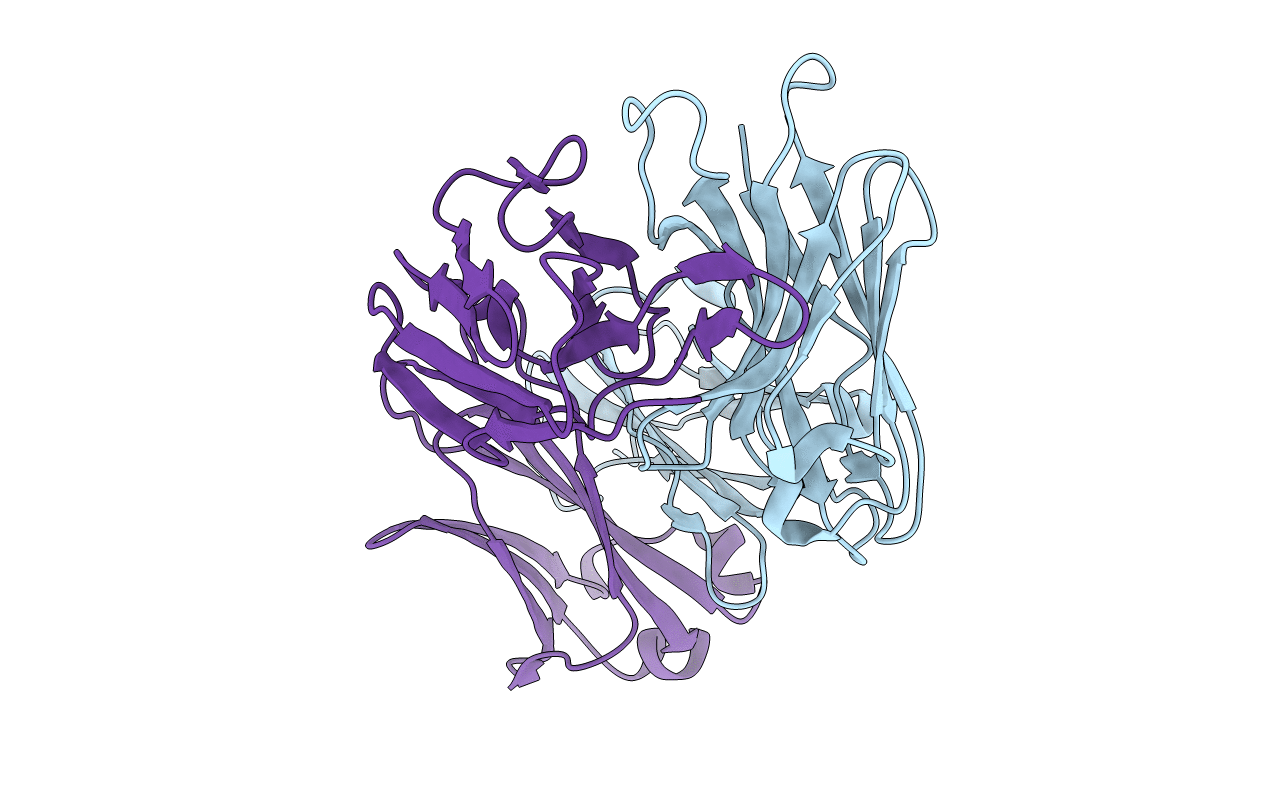
Deposition Date
2015-05-14
Release Date
2015-08-19
Last Version Date
2024-10-30
Entry Detail
PDB ID:
4ZTP
Keywords:
Title:
Fab structure of rabbit monoclonal antibody R53 targeting an epitope in HIV-1 gp120 C4 region
Biological Source:
Source Organism:
Oryctolagus cuniculus (Taxon ID: 9986)
Host Organism:
Method Details:
Experimental Method:
Resolution:
1.63 Å
R-Value Free:
0.22
R-Value Work:
0.19
R-Value Observed:
0.19
Space Group:
C 1 2 1


